Developers are set to open the first building in New York City entirely powered by renewable energy — 87 solar panels and a small wind turbine — and you can stay there. It’s a bed-and-breakfast.
The Delta opened to reporters in late July, even though its final pieces were still coming together. The city hadn’t quite approved overnight stays in the IKEA-furnished studio and triplex. A retail space and a fried-food bonanza called Bite This also weren’t finished. But The Delta will have it all soon, with one notable exception: The building lacks a true south, the direction solar panels most often face to absorb the sun.
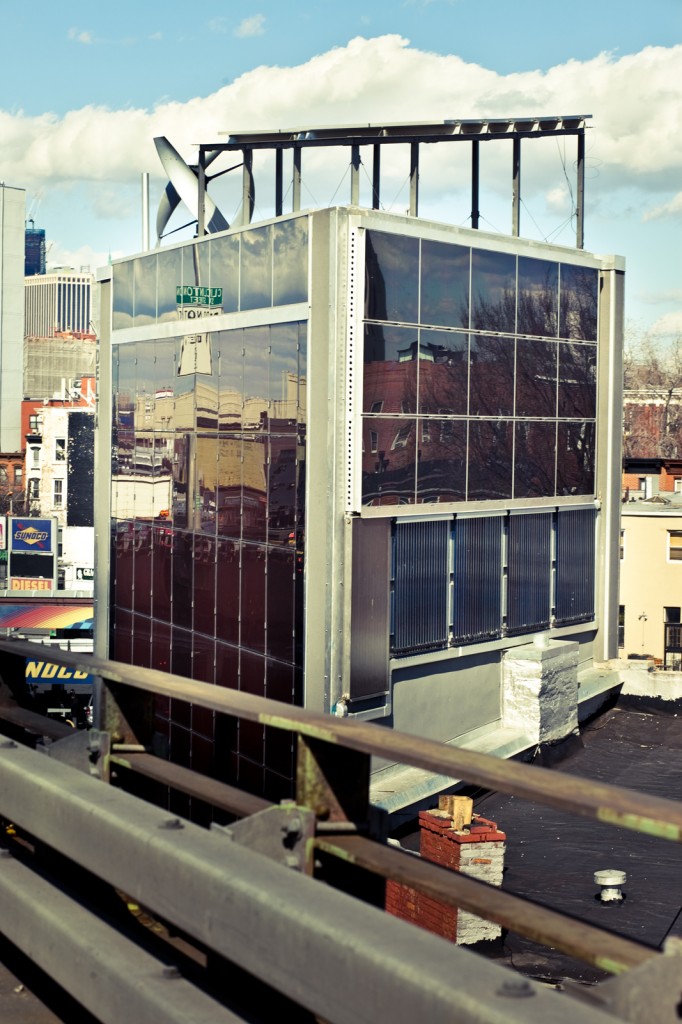
The Delta, a triangular-shaped building, points toward the southern sky. This is a view from the nearby I-278.
Conforming to the sharp-angled intersection of West 9th Street and Hamilton Avenue, The Delta is named for its triangle shape. In architecture, triangles are strong and increasingly used in complex projects. But when developer Ron Faia invited a string of solar companies to install panels on the triangular building, they scoffed.
The Idea
Faia and his co-developer at Dynamic Technical Concepts began The Delta 10 years ago, without any intention of making it a renewable energy model. The building that stood there then was a dilapidated two-story. The cost to repair it had led to perpetual vacancy, so Faia convinced city officials to let him build anew. The variance process in code-heavy New York took several years.
“We just wanted to make a cool, unusual building,” he says. “The idea for the renewable energy came to us four years ago, when the price of gas and oil went up.” Still, the five-story building seemed impossibly three-sided to most solar companies, so Faia started his own: Voltaic Solaire, a Brooklyn-based company that designs and installs solar and wind-power systems. He says: “I thought if we can create a building here and make it work, imagine what we could do when we have a true south.”
Faia decided to cover most of the available space on the walls and roof with solar panels — skin it with solar film, he says. Delta is expected to produce 12.3 MW of energy a year with its 10.2-KW system, more than the 2,700 sq. ft. property — including the restaurant and retail space — is estimated to require. Excess power will be sold back to the grid.
The Panels
Workers erected scaffolding in recent months to install several types of solar panels on the east and west sides of the building and the roof. The panels were selected, at the time, on the highest output potential and aesthetic value, Faia says.
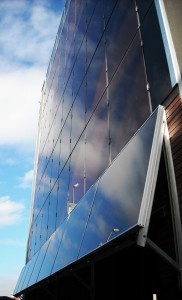
Passers-by may only notice windows beneath these panels at night, when lights are on inside the building.
On the facade of the building, the eastern side, 36 TianWei frameless opaque thin-film panels cover the bricks on the building’s top three floors, except where there are windows. In those spots, workers arranged 12 transparent thin-film panels from the same company. People on the streets below can make out the windows only at night, when light shines through from inside.
Though Faia says he strives to use American products, the TianWei amorphous silicon panels were designed to mount upright and do well in “inconvenient” conditions – recording up to 7% efficiency, the manufacturer says. The panels were bought in China and shipped to New York, where they now reflect the image of traffic passing on the Brooklyn-Queens Expressway. And, Faia says, the panels’ red hue lends itself to the color of the brick.
Sharp made the 15 thin-film panels that skin the western wall. Just below them are four solar hot water units – even though The Delta needed only three – that will provide enough hot water for the building and its restaurant. Sharp also produced the seven thin-film panels on an awning above the street.
The ten panels on the roof — still the most integral part of the system — are 250- watt monocrystalline silicon modules made by Samsung. Feet away, a wind turbine spins contributing 10% of the building’s power. The panels feed into three types of inverters — Solectria, SMA and Fronius — and a combiner box from SolarBOS. The diversity of inverters was chosen to give potential customers of Voltaic Solaire an idea of the available technology, perhaps during their overnight stay.
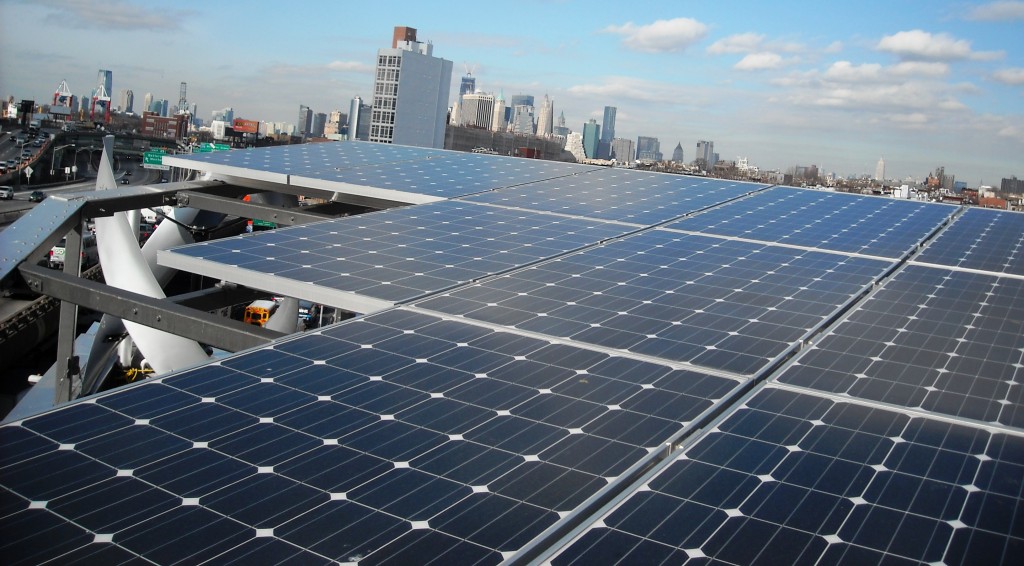
Ten 250- watt monocrystalline silicon modules made by Samsung are mounted on the roof of The Delta, a 100% solar- and wind-powered building in New York City.
The Racking
To outfit the building with panels, Faia needed vertical racking. But the complexity and the lagging efficiency of vertical solar systems has led to sporadic use. When it is used, it’s often an architectural or environmental statement rather than a primary means to generate energy. As a result, few companies manufacture such systems.
Faia had to look overseas, to the Germany-based Schletter. It’s the company’s first facade system in the United States, after completing 10 such projects in Europe. John VanWinkle, a project engineer for Schletter, says one of the main concerns with facade systems is safety.
Rooftop solar arrays are surrounded by parapets, but wall-mounted systems run the risk of panels sliding onto the ground — and possibly people — below. The systems must be heavier, VanWinkle says, and the anchors to the wall must be verified. Building materials and obstructions complicate the systems.
On The Delta, VanWinkle used a cross-rail system on one wall and a single layer on the other. A cross-rail system is effective when obstacles are present on a wall, such as windows or signs. A basic first layer supports a complicated second.
As with most projects, the actual installation varied from what was on paper. The late addition of the restaurant, for example, meant moving an awning higher up on a wall. But the end result was seamless, VanWinkle says. “It almost looks futuristic.”
Schletter also installed the roof mounting.
The Reason
Faia says the bed-and-breakfast will be available for guests staying at least a few nights beginning soon. He is offering it as an inn rather than a private residence as it better affords the opportunity to demonstrate renewable energy.
Faia says he imagines children coming through on class trips, learning about the benefits of off-grid energy. The building itself cost about $500,000. The renewable component brought the cost to $663,000. But various tax credits and incentives — including New York’s New York State Energy Research and Development Authority (NYSERDA) funding, which is a state funded incentive to promote New York’s energy, economic, and environmental wellbeing – will trim the total cost by nearly $40,000.
But for Faia, money isn’t the main consideration.
Faia says he learned about energy conservation from his parents while growing up in the Caribbean and visiting Italy. He saw how other cultures conserve energy. “As a child, we were taught not to be wasteful, and take what you need,” he says.
And now, with support from President Barack Obama and Mayor Michael Bloomberg — whose PlaNYC goal is to reduce New York’s carbon emissions by 30% by 2030 – the environment is advantageous for renewable energy.
Plus, it’s a new challenge for the builder. “After a while, if you look at yourself as an artist, you need to reinvent yourself,” he says.
During an interview, Faia says he looked up at the tall New York building with broad southern walls and thought about what could be done if only businesses people and entrepreneurs saw the possibilities.
“When you speak to the average person, they think solar is a great thing for the future,” Faia says. “No. The future is today. We want to illustrate to entrepreneurs that it is very easy to implement into any building. We’ve done it.”
Now, they can see for themselves. SPW

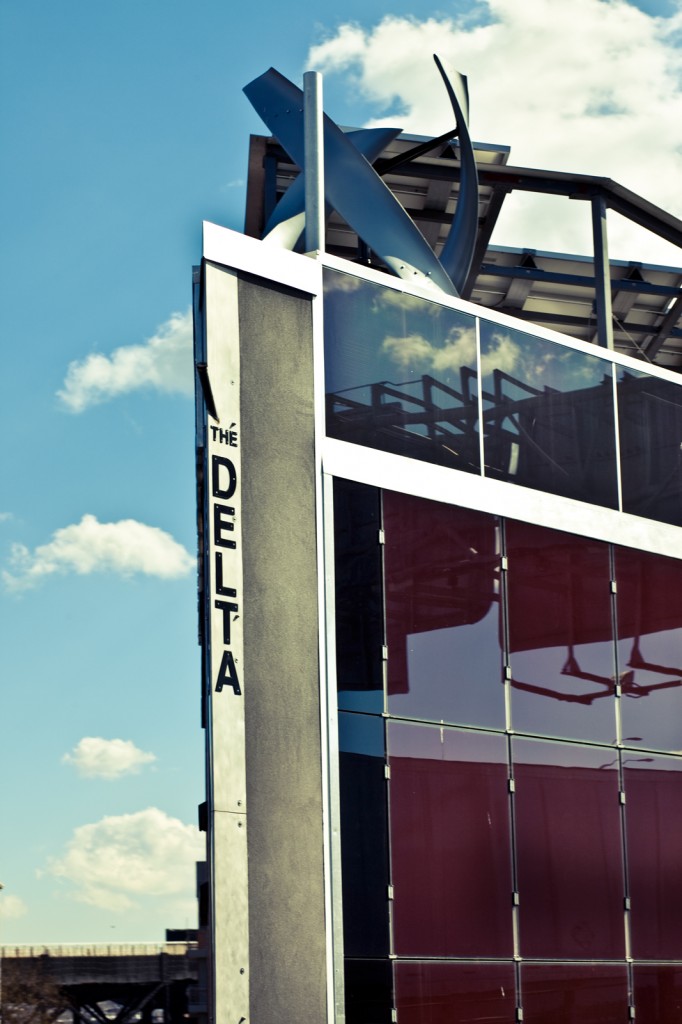



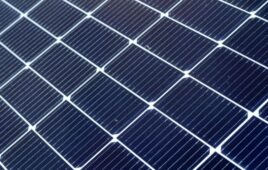
Very interesting project and article.
Netzero is my new favorite word. Buildings that supply more energy than they use! This is the game changer for the world and will help alleviate climate change. I love that there are people out there creating solutions that not only work, but are beautiful and sexy too.